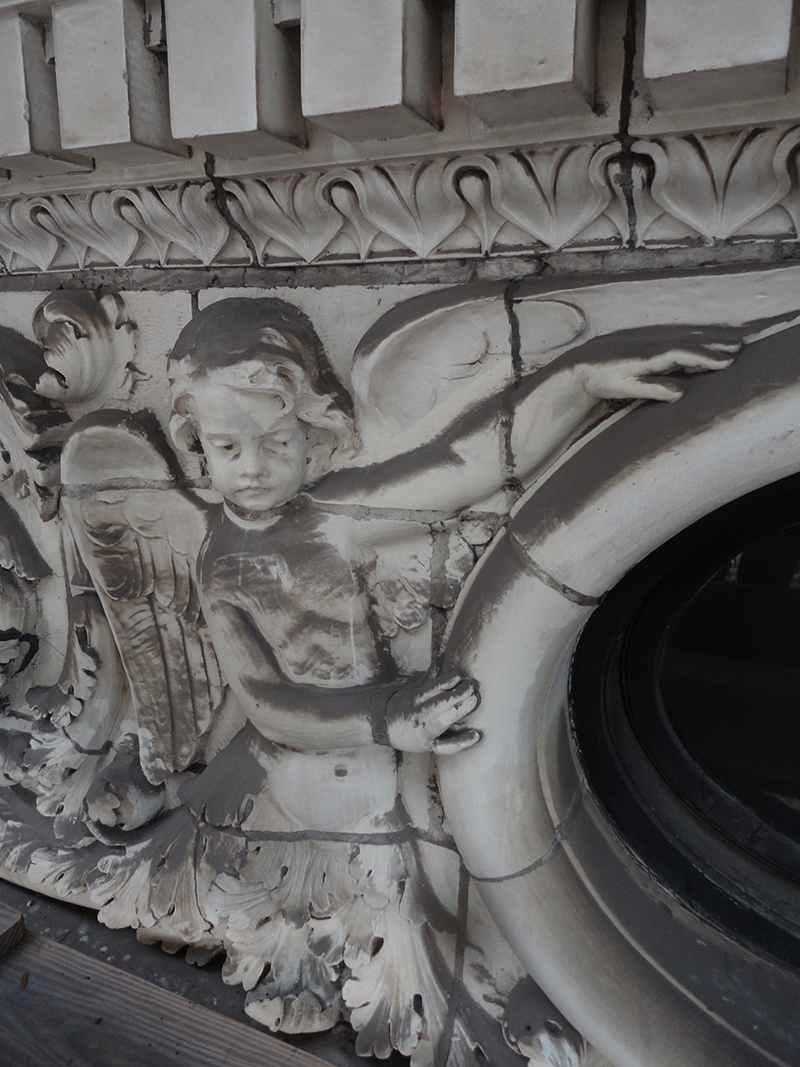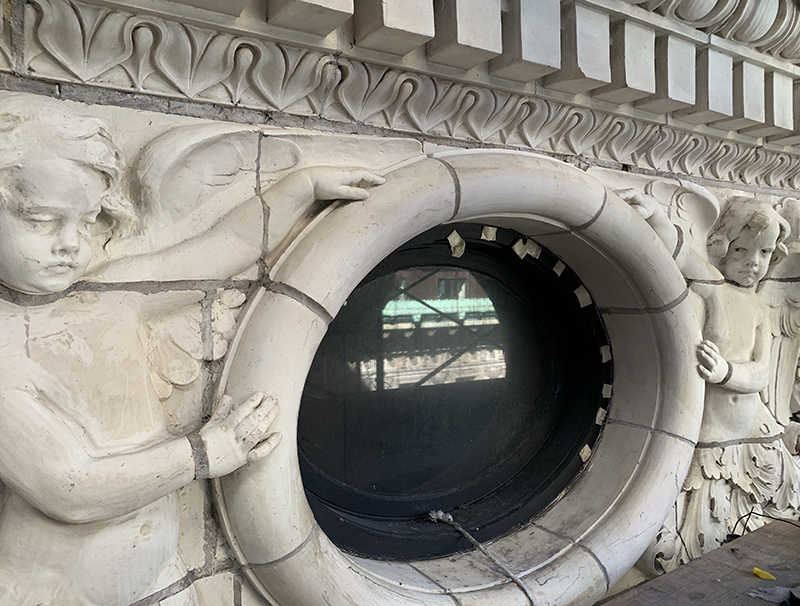
social club in New York City, before restoration.

Falling debris from defective building façades continues to present hazards for pedestrians on the streets of New York City. Multiple cases of falling masonry have resulted in serious injuries and even deaths in recent years.
The New York City Department of Buildings (DOB) has responded by tightening its façade inspection rules. Currently, the city’s Façade Inspection Safety Program (FISP), formerly known as Local Law 11/98, requires inspections every five years for all buildings taller than six stories.
For over two decades, Steven Kratchman Architect PC, has been helping building owners navigate the facade inspection and repair process. While it is essential for public safety, it can be complex and costly for owners of pre-war buildings – which often have terra cotta or limestone features that are over 100 years old. Many of these naturally brittle elements are failing, resulting in buildings being classified as “Unsafe,” or “SWARMP” under FISP.
A Reputation for Beauty and Durability
Architects have been using terra cotta to beautify building exteriors for centuries. From the late 1800s through the 1920s, elaborate terra cotta ornamentation became commonplace in Manhattan neighborhoods that were undergoing development, including the Upper West Side, Tribeca and Soho.
Unfortunately, terra cotta’s reputation as a low-maintenance material sometimes led to faulty installation that allowed water to penetrate. The expansion and rusting of steel anchors caused the terra cotta to crack and chip, and structural failures resulted from the deterioration of mortar and masonry backfill.


Navigating Complex Regulatory Issues
Today, the DOB estimates there are 14,500 buildings in the FISP “universe,” and façade failures involving terra cotta are one of the top three concerns. Building owners are required to keep up with inspections and make mandated repairs, but the program’s complex details often result in missed inspections and expensive penalties.
Buildings with landmark designations may encounter additional hurdles. For instance, the Landmark Preservation Commission has not approved the use of fiberglass, a lightweight option for hard-to-access locations. Prior to this ruling, our firm used fiberglass to replace damaged terra cotta detailing – and preserve the historical design aesthetics – on the façade of the landmark Corn Exchange Bank Building at 140 Fifth Ave.
However, using original material is the preferred option for maintaining visual integrity. Our recently completed renovation of the landmark Harmonie Club involved terra cotta and precast concrete repairs to the façade of the classic Beaux-Arts building that showcased architect Stanford White’s original design.
Embracing Technology to Improve Façade Inspection and Repair
Experts are embracing technology to improve the façade inspection and restoration process. Examples include improved anchoring and waterproofing installation methodologies and utilizing 3-D mapping to cast 100% accurate façade replacement pieces. The DOB is also examining the use of drones to inspect hard-to-reach locations.
Advances in technology will continue to help architects and engineers take a proactive role in creating safer façades. It is exciting to envision the not-too-distant future when drones will monitor cracks, color changes and other types of building deterioration – and enable real-time resolution.
Steven Kratchman is founder and owner of Steven Kratchman Architect, PC, Manhattan, NY.
